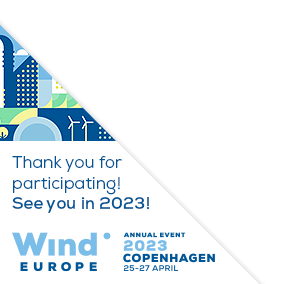Posters
Siblings:
ProceedingsProgrammeSpeakersPostersContent PartnersGlobal Markets TheatreWindTalks for InnovationProgramme Committee & Abstract ReviewersSpeaker's DashboardCome meet the poster presenters to ask them questions and discuss their work
Check the programme for our poster viewing moments. For more details on each poster, click on the poster titles to read the abstract. On Wednesday, 6 April at 15:30-16:15, join us on Level 3 of the Conference area for the Poster Awards!
PO146: Waking up to the current task of turbine interaction modelling
Joel Manning, Principal Specialist and R&D Lead, K2 Management
Abstract
Post-modelling adjustments to industry standard turbine interaction models to account for the observed under-prediction of turbine interaction effects, generally attributed to upwind effects or the “blockage effect”, is now commonplace. As RANS CFD turbine interaction modelling remains prohibitively expensive in most situations, this is a valid approach that provides clear improvement in agreement with production data. However, as post-modelling adjustments have been derived in the past, many current methods are often an amalgamation of multiple post-modelling adjustments. These compounded adjustments create a risk that the specific application and detail of the modelling is lost which reduces transparency and could lead to some situations being poorly modelled. K2M here investigates the impact of varying the components which make up commonly applied turbine interaction modelling approaches. A range of turbine interaction models have been run with a number of wind speed deficit models, e.g. PARK, but also other aspects such as the ground, superposition and upwind models, many of which are often hard-coded within commonly applied software packages. All modelling results are compared to an extensive validation dataset of over 20 offshore wind farms, representing over 7GW of installed capacity. This extensive comparison with real-world data across a range of modelling methods reveals which factors, that are readily available and commercially applicable, have an impact on turbine interaction modelling accuracy. Consideration of these results suggests that more physically representative turbine interaction modelling provides increased accuracy and reduces need for post-modelling adjustment without significantly increasing cost.










Follow the event on: